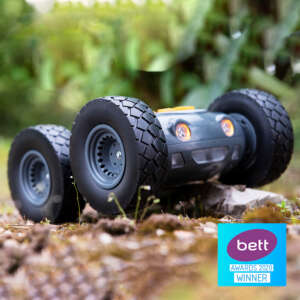In this article, Andrew Whitehouse, a panellist from the TTS Talking Neurodivergence in Education webinar discusses how we can create future-proof, inclusive learning environments.
A sense of belonging through peer support
Depending upon where you look and what you read, neurodivergent pupils can be anywhere between 15 and 20% of the school population. However, it does not stop there. We also have a huge number of children who present with neurodivergent traits and characteristics. But may have trauma, social and emotional, and/or attachment needs. In order to promote acceptance and belonging, we need to see much further than labels and diagnoses. It is about people and individual needs.
During my time teaching at a school which specialised in SEND, I became aware that the pupils were getting something more important than education. They were learning about equity, sharing, support, and genuine inclusion. For example, autistic, or ADHD pupils could often be found setting up wheelchairs for their peers. Essentially this meant that they were learning to meet the needs of others from a purely passive perspective, it’s just what they did!
In my current role, I have tried to replicate this scenario in mainstream settings. You would be amazed at how incredibly supportive some of our often more challenging (or as I prefer – anxious) children can be of their younger peers when they are given the task of reading with the year ones or supporting a physical outdoor activity in reception.
But why is this so successful?
“Awareness, Acceptance, Belonging…”
By losing the phrase challenging and replacing it with anxious we can discover the answer. In these scenarios, the younger child becomes in awe of the older child, and the older child has a much-needed self – esteem boost. And it goes even deeper. The younger child learns to trust, accept, and understand those who may be neurodivergent or different to themselves in some way from a very early age. In essence, the benefits of true peer to peer inclusion are reciprocal.
So, what am I saying that true peer to peer inclusion is? Quite simply it is about early intervention from both sides. It is about working to individual strengths, and it is about cohesion. We need to recognise the skills and strengths in all and apply them appropriately, without feeling the need to conform to accepted practice.
And what isn’t it? It is not about asking children to be the same as others. It is not about teaching fish to climb trees.
What would the ideal, future-proof classroom look like to me?
The future-proof classroom is about children, not adults. It is about children being comfortable and being supported in readiness to learn. And it is about choice.
When I am working at home, I make choices about where I sit to write an article (like this one). I might lie on the bed with a tea tray on my lap or I might sit on the settee. I might use the breakfast bar in the kitchen, it depends on my mood. Of course, some people are far more regimented as to where they always sit for one activity or another. And that is fine too.
In the world of children’s learning things are changing at a blistering pace and we are not keeping up. The days of teachers standing in front of the class pointing at the interactive whiteboard are coming to a close. This is because the children are completely beyond this. Information is no longer held by the educator and disseminated to the pupil because all information is freely available to everybody.
Because of this, I truly believe the most important skill set is research, which can be done lying on a beanbag with an iPad, or in a sensory room with a couple of friends. The face of the whole classroom concept thus needs to change. As does the idea of what is a classroom. Groups of children working in corridor spaces with electronic devices such as Rugged Robots, Oti-Bot, and other investigative resources need to become the norm.
And what of the teacher’s role?
The teacher becomes a facilitator of learning, encouraging the child to ask relevant questions and evaluate sources of information. Or integrating electronic resources into the equation. No longer does the teacher need to feel that they must be the source of all knowledge (as in some cases). But instead, a constant guide through the wonderful world of future-proof learning.

Article written by Andrew Whitehouse
TEDx Speaker and Bamford Lecturer Andrew Whitehouse is a specialist in neurological diversity. He provides interventions for professionals, parents and young people with Autism, ADHD and related conditions as well as behavioural interventions.




